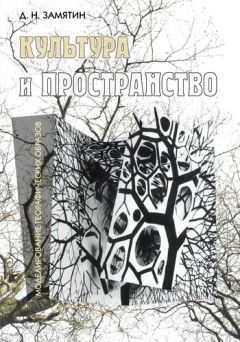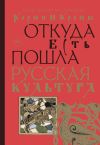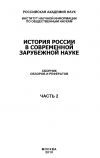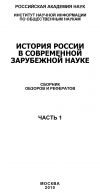
Автор книги: Дмитрий Замятин
Жанр: Культурология, Наука и Образование
сообщить о неприемлемом содержимом
Текущая страница: 38 (всего у книги 40 страниц)
Agnew J, Corbridge S. Mastering space: hegemony, territory and international political economy. London; New York: Routledge, 1995. 262 p.
Anderson J. R. The structure of Cognition. L.: Oxford University Press, 1983. 304 p.
Andrews J. H. Science and cartography in the Ireland of William and Samuel Molyneux. Dublin, 1980. 20 p. (Proceedings of the Royal Irish acad. Sect. C. 1980. Vol. 80. № 12. P. 231–250.)
Appadurai A. Modernity at Large. Minneapolis: University of Minnesota Press, 1996. 230 p.
Ayers E. L., Limerick P. N., Nissenbaum S., Onuf P. S. All Over the Map: Rethinking American Regions. Baltimore; London: Johns Hopkins University Press, 1996. 136 p.
Barry A. M. Visual intelligence. N. Y.: State University of New York Press, 1997. 424 p.
Bassili J. N. Temporal spatial contingencies in the perception of social events // Journal of personality and social psychology. 1976. Vol. 33. P. 680–685.
Bassin M. Imperialism and the nation state in Friedrich Ratzel's Political Geography // Progress in Human Geography. 1987. 11. P. 473–495.
Bassin M. Inventing Siberia: Visions of the Russian East in the Early Nineteenth Century // The American Historical Review. 1991. Vol. 96. № 3. P. 763–794.
Bell D. S. A. Mythscapes: memory, mythology, and national identity // British Journal of Sociology. 2003. Vol. 54. № 1. P. 63–81.
Bill V. T. The Circular Frontier of Muscovy // Russian Review. 1950. № 9/1. P. 45–52.
Billington R. A. The American Frontier // Beyond the Frontier / Bohannan P., Plogg F. (eds.). N. Y., 1967. P. 3—24.
Bishop P. Residence on Earth: anima mundi and a sense of geographical 'belonging' // Ecumene. A Journal of environment, culture, meaning. 1994. Vol. 1. № 1. P. 51–65.
Bouwhuis D. G., Bridgeman B., Owens D. A., Shebilske W., Wolff P. (Eds.). Sensorimotor interaction in space perception and action. Amsterdam: North-Holland, 1987. 352 p.
Brauwer R. W. Boundaries and Frontiers in Medieval Muslim Geography // Transactions of the American Philos. Society. 85/6. 1995. P. 1—73.
Brunn S., Cottle Ch. Small states and cyberboosterism // The geographical review. Vol. 87. № 2. April 1997. P. 240–258.
Bruce V., Green P. Visual perception: physiology, psychology and ecology. Hill-sdale: Lawrence Erlbaum Associates, 1993. 431 p.
Castree N. Commodity fetishism, geographical imaginations & imaginative geographies // Environment and Planning A. 2001. Vol. 33. P. 1519–1525.
Chang T. S. «Configuring new tourism space»: exploring Singapore's regional tourism forays // Environment and planning. London, 2001. Vol. 33. № 9. P. 1597–1620.
Communication in the New Millenium: Communication Technology for Humanity. IAMCR Scientific Conference. Books of Abstracts. Seoul. Korea. 1994. July 3–8. P. 144.
Conflict, politics and the urban scene / Ed. by K. R. Cox, P. J. Johnston. New York: St. Martin's Press, 1982. 265 p.
Conforti J. A. Imagining New England: Explorations of Regional Identity from the Pilgrims to the Mid-Twentieth Century. Chapel Hill; London: The University of North Carolina Press, 2001. 384 p.
Corbin H. Mundus imaginalis or the imaginary and the imaginal // Spring 1972. Dallas: Spring Publications, 1972. P. 1—19.
Cosgrove D. E. Models, descriptions and imagination in geography // Remodelling geography / Ed. by B. MacMillan. Oxford: Blackwell, 1989. P. 230–244.
Cosgrove D., Atkinson D. Urban rhetoric and embodied identities: city, nation and empire at the Vittorio Emanuele II monument in Rome, 1870–1945 // Annals of the Association of American Geographers. 1998. Vol. 88. P. 28–49.
Couclelis H. Location, place, region, and space // Geography's Inner Worlds. New Brunswick: Rutger Univ. Press, 1992. P. 215–233.
Cultural Turns/Geographical Turns. Perspectives of Cultural Geography / Ed. by S. Naylor, J. Ryan, I. Cook and D. Crouch. New York: Prentice Hall, 2000. 408 p.
Culture, Globalization and the World-system: Contemporary Conditions for the Representation of Identity / Ed. by Anthony D. King. Minneapolis: University of Minnesota Press, 1997. 186 p.
Culture, Space and Representation. A special issue of the Irish Journal of Antropology. Vol. 4. Maynooth: National University of Ireland, 1999. 110 p.
Crouch D. Spacing, performing, and becoming: tangles in the mundane // Environment and Planning A. 2003. Vol. 35. P. 1945–1960.
Crouch D. Spatialities & the Feeling of Doing // Social & Cultural Geography. 2001. Vol. 2. No. 1. P. 61–73.
Crowhurst A. Empire theatres and the empire: the popular geographical imagination in the age of empire // Environment and Planning D: Society and Space. 1997. Vol. 15. P. 155–173.
Cvijic J. The zones of civilization of the Balkan Peninsula // Geographical Review. 1918. 5 (6). P. 470–482.
Daniels S. Place and Geographical Imagination // Geography. 1992. № 4 (337). P. 310–322.
Deleuze G., Guattari F. Rhizome. Introduction. Paris: Minuit, 1976. P. 62.
Dewsbury J. – D. Witnessing space: «knowledge without contemplation» // Environment and Planning A. 2003. Vol. 35. P. 1907–1932.
Driver F. Bodies in space: Foucault's account of disciplinary power // Reading human geography: the poetics and politics of inquiry / Ed. by T. Barnes and
D. Gregory. London: Edward Arnold, 1997. Р. 279–289.
Driver F. Visualizing geography: A journey to the heart of the discipline // Progress in Human Geography. 1995. № 19. P. 123–134.
Eden C. Cognitive mapping // Eur. J. of Operational Res. 1988. Vol. 36. № 1. P. 1—13.
Edensor T. National identity and the politics of memory: remembering Bruce and Wallace in symbolic space // Environment and Planning D: Society and Space. 1997. Vol. 15. P. 175–194.
Egenhofer M., Franzosa R. Point-Set Spatial Topological Relations // International Journal of Geographical Information Systems. 1991. № 5 (2). P. 161–174.
Elsrud T. Risk creation in traveling – Backpacker Adventure Narration // Annals of Tourism Research. 2001. Vol. 28. № 3. P. 597–617.
Embodied geographies: spaces, bodies and rites of passage / Ed. by E. K. Teather. London: Routledge. 1999. 268 p.
Ewert P. N. Factors in space localization during inverted vision. I. Interference // Psychological Review. 1936. Vol. 43. P. 527–546.
Eysenck M. Human memory. Theory, research and individual differences. N. Y: Acad. Press, 1977. 184 p.
Fauconnier G. Espaces mentaux: Aspects de la construction du sens dans les langues naturelles. Paris: Minuit, 1984. 216 p.
Foucault M. Of Other Spaces // Diacritics. 1986. № 16. P. 22–27.
Foucault M. Questions on Geography // Foucault M. Power/Knowledge: Selected Interviews and Other Writings 1972–1977 / Ed. by G. Gordon. Brighton; Sussex: Harvester Press, 1980. P. 63–77.
Felloneau M. – L. Love and loathing of the city: Urbanophilia and urbanophobia, topological identity and perceived incivilities // Journal of Environmental Psychology. 2004. Vol. 24. P. 43–52.
Forer P. A place for plastic space // Progress in human geography. 1978. № 2. P. 230—267
Geography and National Identity / Hooson D. (ed.). Oxford; Cambridge (Mass.): Blackwell, 1994. 391 p.
Geographies of global change: remapping the world in the late twentieth century / Ed. By R. J. Johnston, P. J. Taylor, and M. J. Watts. Oxford (UK) and Cambridge (USA): Blackwell, 1995. 462 p.
Gilbert D. Heart of Empire? Landscape, space and performance in imperial London // Environment and Planning D: Society and Space. 1998. № 16. P. 11– 28.
Greimas A. J. For a Topological Semiotics // The City and the sign / Gottdiener M., Lagopoulos A. Ph. (ed.). N. – Y: Columbia University Press, 1986. P. 25–54.
Hage G. The spatial imaginary of national practices: dwelling – domesticating/being – exterminating // Environment and Planning D: Society and Space. 1996. Vol. 14. P. 463–485.
Hall S. The Local and the Global: Globalization and Ethnicity // Culture, Globalization and the World-System. Contemporary Conditions for the Representation of Identity / Ed. by A. D. King. Minneapolis: University of Minnesota Press, 1997. P. 19–41.
Hammer M. Putting Ireland on the Map // Textual Practice. 1989. 3. P. 184– 201.
Hannerz U. Scenarios for Peripheral Cultures // Culture, Globalization and the World-System. Contemporary Conditions for the Representation of Identity / Ed. by A. D. King. Minneapolis: University of Minnesota Press, 1997. P. 107–129.
Harvey D. The condition of postmodernity. L.: Basil Blackwell, 1989. 372 p.
Hetherington K. Spatial textures: place, touch, and praesentia // Environment and Planning A. 2003. Vol. 35. P. 1933–1944.
Holdich T. The use of practical geography illustrated by recent frontier operations // Geographical Journal. 1899. 13 (5). P. 465–480.
Homelands: A Geography of Culture and Place across America / Ed. by Richard L. Nostrand and Lawrence E. Estaville. Baltimore and London: The Johns Hopkins University Press, 2001. 320 p.
Hudson R., Pocock D. Images of the urban environment. New York: Columbia University Press, 1978. 181 p.
Humanistic geography and literature: Essays on the experience of place / Ed. by D. C. D. Pocock. London: Croom Helm; Totowa (N. J.): Barnes & Noble, 1981. 224 p.
Imperial Cities: Landscape, Display and Identity / Ed. by F. Driver and D. Gilbert. Manchester: Manchester University Press, 1999. 283 p.
Inside the «Trialectics of Spatiality» // Annals of the Association of American Geographers. June 1999. Vol. 89. № 2. P. 345–347.
Jackson J. B. Landscape in Sight: Looking at America / Ed. by H. L. Horowitz. New Haven and London: Yale University Press, 1997. 400 p.
Jordan T. G., Domosh M., Rowntree L. The Human Mosaic: A Thematic Introduction to Cultural Geography. Sixth Edition. New York: Harper Collins College Publishers, 1994. 557 p.
Kasbarian J. A. Mapping Edward Said: geography, identity, and the politics of location // Environment and Planning D: Society and Space. 1996. Vol. 14. P. 529—557.
Kitchin R. M. Increasing the integrity of cognitive mapping research: appraising conceptual schemata of environment-behaviour interaction // Progress in Human Geography. 1996. 20, 1. P. 56–84.
Kosslyn S., Ball T., Reiser B. Visual Images Preserve Metric Spatial Information: Evidence from Studies of Image Scanning // Journal of Experimental Psychology: Human Perception and Performance. 1978. № 4. P. 47–60.
Kotkin J. The New Geography: How the Digital Revolution is Reshaping the American Landscape. N. Y.: Random House, 2000. 244 p.
Krygier J. B. Maps, the Representational Barrage of 19th Century Expedition Reports, and the Production of Scientific Knowledge // Cartography and GIS. 1997. 24, 1. P. 27–50.
Kuipers B. Modeling Spatial Knowledge // Cognitive Science. 1978. № 2. P. 129–153.
Lamb A. The Sino-Indian and Sino-Russian borders: some comparisons and contrasts // Studies in the social history of China and South-East Asia. Cambridge, 1970. P. 135–152.
Language in geographical context / Ed. by C. H. Williams. Clevedon; Philadelphia: Multilingual matters, 1988. 316 p.
Lefebvre H. The Production of Space. Oxford: Blackwell, 1991. 454 p.
Livingstone D. N., Harrison, R. T. The frontier: metaphor, myth and model // Professional Geographer. 1980. № 32. P. 127–132.
Lowental D. The American Scene // Geographical Review. 1968. № 58. P. 61–88.
Lowenthal D. Geography, experience and imagination: towards a geographical epistemology // Annals of Association of American Geographers. 1961. № 37. P. 1–5.
Manguel A., Guadalupi G. The Dictionary of Imaginary Places. The newly updated and expanded classic. L.: Bloomsbury, 1999. 756 p.
Manners I. R. Constructing the Image of a City: The Representation of Constantinople in Christopher Buondelmonti's Liber Insularum Archipelagi // Annals of the Association of American Geographers. 1998. Vol. 87. P. 172–102.
Mapping American Culture / Ed. by W. Franklin and M. Steiner. Iowa City: University of Iowa Press, 1992. 310 p.
McLean S. Touching Death: Tellurian Seduction and Spaces of Memory in Famine Ireland // Culture, Space and Representation. A special issue of the Irish Journal of Anthropology. 1999. Vol. 4. P. 61–73.
McMaster R. B. The Integration of Simlification and Smoothing Algorithms in Line Generalization // Cartographica. 1989. 26. № 1. P. 101–121.
Merrifield A. The Extraordinary Voyages of Ed Soja: Inside the «Trialectics of Spatiality» // Annals of the Association of American Geographers. June 1999. Vol. 89. № 2. P. 345–347.
Morin K. M., Guelke J. K. Strategies of Representation, Relationship and Resistance: British Women Travelers and Mormon Plural Wives, ca. 1870–1890 // Annals of the Association of American Geographers. September 1998. Vol. 88. № 3. P. 437–462.
Murrey J. A. Mythmakers of the West: Shaping America's Imagination. North-land Publishing, 2001. 184 p.
Nash D. On Travelers, Ethnographers and Tourists // Annals of Tourism Research. 2001. Vol. 28. № 2. P. 493–496.
Nastopka K. Two approaches to the myth of city foundation: Syntagmatic and paradigmatic // Sign System Studies (Труды по знаковым системам). Vol. 30. № 2. Tartu: Tartu University Press, 2002. P. 503–512.
О Cadhla S. Mapping a Discourse: Irish Gnosis and the Ordnance Survey 1824–1841 // Culture, Space and Representation. A special issue of the Irish Journal of Anthropology. 1999. Vol. 4. P. 84—110.
О Tuathail G. Critical Geopolitics. The Politics of Writing Global Space. London: Routledge, 1996. 316 p.
Odum H. W., Moore H. E. American regionalism. A cultural-historical approach to national integration. New York: Henry Holt and company. 1938. 693 p.
Paasi A. Nationalizing everyday life: individual and collective identities as practice and discourse // Geography research forum. 1999. Vol. 19. P. 4—21.
Papatheodorou A. Why people travel to different places // Annals of Tourism Research. 2001. Vol. 28. № 1. P. 164–179.
Parker G. The geopolitics of domination. London; New York: Routledge, 1988. 184 p.
Parker G. Geopolitics. Past, present and future. L.; Wash.: Pinter, 1998. 200 p. Peckham R. S. Between East and West: the border writing of Yeoryios Vizyinos // Ecumene. 1996. 3 (2). P. 167–187.
Peckham R. S. Map mania: nationalism and the politics of place in Greece, 1870–1922 // Political Geography. Vol. 19. № 1. January 2000. P. 77–97.
Portugali J. Social synergetics, cognitive maps and environmental recognition // Synergetics on Cognition / Eds. Haken H. Stadler M. Berlin: Springer, 1990. P. 379–392.
Portugali J., Haken H. Synergetics and cognitive maps // Geography, Environment and Cognition (J. Portugali ed.), a special theme issue Geoforum. 1992. 23 (2). P. 111–130.
Raitz Karl B. Place, Space and Environment in America's Leisure Landscapes // Journal of Cultural Geography. 8 (Fall – Winter 1987). P. 49–62.
Randviir A. Sign as an object of social semiotics: evolution of cartographic semiosis // Sign System Studies (Труды по знаковым системам). Vol. 26. Tartu: Tartu University Press, 1998. P. 392–416.
Ratzel F. The territorial growth of states // Scottish Geographical Magazine. 1896. 12. P. 351–361.
Rowntree L. Creating a Sence of Place // Journal of Urban History. 1981. 8. P. 61–76.
Rowntree L., Conkey M. Symbolism and the Cultural Landscape // Annals of the Association of American Geographers. 1980. 70. P. 459–474.
Sack R. D. The Consumer's World: Place as Context // Annals of the Associa-tion of American Geographers. 1988. 78. P. 642–664.
Said E. W. Narrative, Geography and Interpretation // New Left Review. 180. March-April 1990. P. 81–97.
Schama S. Landscape and Memory. New York: Vintage Books, 1996. 652 p.
Shaw D. J. B. Southern Frontiers of Muscovy, 1550–1700 // Studies in Russian Historical Geography / Bater J. N., French R.A. (eds.). L., 1983. P. 117–142.
Soja E. W. Keeping Space Open // Annals of the Association of American Geographers. June 1999. Vol. 89. № 2. P. 348–353.
Soja E. W. Postmodern Geographies: The Reassertion of Space in Critical Social Theory. London: Verso, 1990. 266 p.
Stewart R. S., Nicholls R. Virtual worlds, travel, and the picturesque garden // Philosophy & Geography. 2002. Vol. 5. №. 1. P. 83–99.
Studing Cultural Landscapes / Ed. By I. Robertson and P. Richards. New York: Oxford University Press, 2003. 199 p.
Sui D. Z. Visuality, Aurality and Shifting Metaphors of Geographical Thought in the Late Twentieth Century // Annals of the Association of American Geographers. June 2000. Vol. 90. № 2. P. 322–343.
Summer B. H. The Frontier // Survey of Russian History. Ch. 1. L., 1961. P. 1– 46.
Talmy L. How Language Structures Space // Spatial Orientation: Theory, Research, and Application / Pick H. and Acredolo L. (Eds.). New York: Plenum Press, 1983. P. 225–282.
Tchertov L. Spatial semiosis in culture // Sign System Studies (Труды по знаковым системам). Vol. 30. № 2. Tartu: Tartu University Press, 2002. P. 441–454.
The Interpretation of Ordinary Landscapes. Geographical Essays / Ed. by D. W. Meinig. New York; Oxford: Oxford University Press, 1979. 255 p.
Todorova M. Imagining the Balkans. New York: Oxford University Press, 1997. 257 p.
Tomlinson J. Globalization and Culture. Chicago: The University of Chicago Press, 1999. 238 p.
Treagold W. Russian Expansion in the Light of the Turner on the American Frontier // Agricultural History. 1952. № 26. P. 147–152.
Tuan Yi-Fu. Humanistic geography // Annals of the Association of American Geographers. 1976. Vol. 66. № 2. P. 266–276.
Tuan Yi-Fu. Space and place: The perspective of experience. Minneapolis: University of Minnesota Press, 1977. 235 p.
Tuan Y. Literature and geography: implications for geographical research // Humanistic geography: prospects and problems. Chicago, 1978. P. 194–206.
Tuan Y. Sacred space: explorations of an idea // Butzer K. (ed.) Dimensions of human geography: essays on some familiar and neglected themes. Chicago, 1978. P. 84–99.
Tuan Y. Models, descriptions and imagination in geography // Remodelling geography / Ed. MacMillan B. Oxford: Blackwell, 1989. P. 230–244.
Tuan Y. Between space and time: reflections on the geographical imagination // Annals of Association of American Geographers. 1990. № 80. P. 418–434.
Tuan Y. Realism and fantasy in art, history and geography // Annals of Asso-ciation of American Geographers. 1990. № 80. P. 435–446.
Tuan Yi-Fu. Topophilia: A study of environmental perception, attitudes, a. values / With a new pref. by the author. New York: Columbia University Press, 1990. 260 p.
Turnbull D. Cartography and Science in Early Modern Europe: Mapping the Construction of Knowledge Spaces // Imago Mundi. 1996. 48. P. 5—24.
Turner F. J. The Significance of the Frontier in American History // Proceed-ings of the State Historical Society of Wisconsin. 1894. № 41. P. 79—112.
Vilhjalmsson T. Time and travel in Old Norse Society // Disputatio. 1997. 2. P. 89—114.
Waddington M. Naive Geography // Queen's Quarterly. 1993. № 100(1). P. 149. Wallerstain J. The politic of world-economy. Paris: Maison de Sci. de l'Homme, 1984. 295 p.
Wallerstein I. The National and the Universal: Can There Be Such a Thing as World Culture? // Culture, Globalization and the World-System. Contemporary Conditions for the Representation of Identity / Ed. by A. D. King. Minneapolis: University of Minnesota Press, 1997. P. 95.
White N. R., White P. B. Travel as transition. Identity and place // Annals of Tourism Research. 2004. Vol. 31. № 1. P. 200–218.
Withers C. W. J. Geography, science and national identity in early modern Britain: the case of Scotland and the role of Sir Robert Sibbald (1641–1722) // Annals of Science. 1996. № 53. P. 29–73.
Zade L. Fuzzy sets // Information and control. 1965. Vol. 8. P. 338–353.
Zelinsky W. The Cultural Geography of the United States. Englwood Cliffs, N. J.: Prentice-Hall, Inc., 1973. 164 p.
Приложения
Приложение 1
Образные источники Восточной Европы [852]852
Рецензия на книгу: А. В. Подосинов. Восточная Европа в римской картографической традиции: Тексты, перевод, комментарий. М.: Индрик, 2002. 488 с. (Древнейшие источники по истории Восточной Европы).
[Закрыть]
География в позднюю античную эпоху представляла собой своеобразный когнитивный конгломерат, состоявший из фрагментов древнейшей мифографии, научных изысканий греческих географов, популярных описаний древнеримских ученых и философов, библейской географии. Для современного ученого ситуация осложняется также совершенно иной ролью географической карты в древнем мире: карта не была еще самостоятельным научным продуктом, но, скорее, популярной иллюстрацией к различным географическим образам мира. Тем не менее, изучение сохранившихся текстов и карт, имеющих отношение к региону Восточной Европы, показывает постепенное картографическое становление образов этой территории, многие из которых перекочевали на средневековые карты, а впоследствии оказали влияние, в той или иной форме, и на современные географические представления.
Римская «хорография» (т. е. описание различных местностей и стран) представляла собой причудливое сочетание, смесь страноведческих и этнографических сведений (Подосинов, с. 32); какого-либо концептуального взгляда на мир она, конечно, не формировала. Однако, описание карты мира Марка Випсания Агриппы, политического деятеля и географа эпохи Октавиана Августа, включает в себя географическое обоснование: карта как таковая формируется очертаниями морей, рек и гор (с. 43). Авторов географических текстов этой эпохи не смущало смешение географической номенклатуры ранней античности и времен Великого переселения народов – как, например, в «Космографии» Анонима из Равенны (с. 33). Кроме того, они вынуждены картографически идентифицировать и библейскую номенклатуру: скажем, в «Космографии» Юлия Гонория (IV–V вв.) это география четырех библейских рек, вытекающих из рая (с. 145–146). Части света в библейской традиции воспринимались прежде всего как наследие трех сыновей Ноя – такая точка зрения вполне естественна уже для Анонима из Равенны (с. 219). Карта, или ее описание в этой когнитивной ситуации выступала как идеологический суррогат школьной риторики, политических и культурных стереотипов и философской и теологической метафизики.
Римская картографическая традиция в отношении Восточной Европы обнаруживает поразительную историческую устойчивость. Практически один картографический образец (по всей видимости, это была карта мира Агриппы конца I в. до н. э.) (с. 40) транслировался, через посредников, с большими или меньшими искажениями и исправлениями, в течение нескольких веков, вплоть до XII – начала XIII вв. Собственно картографических изображений, восходящих к эпохе Древнего Рима, сохранилось очень мало (это фактически карта из Дура Европос и Певтингерова карта) – при этом сами они имеют квазигеографическую форму (с. 84), далекую даже от научных теорий греческих географов. Форма итинерариев и периплов наиболее естественна для таких карт, отсюда и невероятные даже по тем временам искажения географических контуров и смещения географических объектов по отношению друг к другу. Путь здесь – это условная прямая линия, поэтому ландшафт и путевые пункты (города) на Певтингеровой карте совершенно не согласованы между собой (с. 361). Таким же образом стоянки кораблей на Черном море соединены на карте из Дура Европос прямой линией, не имеющей никакого отношения к действительным очертаниям черноморской береговой линии (с. 82). Практические нужды и потребности в реальной земной топологии (связи пунктов и расстояния между ними) подавляли необходимость более или менее правдоподобного воспроизведения контуров природных географических объектов.
Структуры картографических описаний мира зависели, в первую очередь, от классических образцов, но также и от местоположения самого автора описания. Наиболее принятым и наиболее часто встречавшимся порядком описания был порядок описания стран с запада, от Гибралтара (с. 63). Но, например, Аноним из Равенны нарушает этот порядок, ставя Равенну в центр описания и характеризуя страны от дальних к ближним по отношению к этому городу (с. 164). В «Космографии» Псевдо-Этика (V или VI в.) также нарушен классический принцип описания, и Италия рассматривается как центр в описании Европы (с. 154). Нетрудно, конечно, сделать вывод о влиянии политико-географической ситуации на порядок и структуру картографического описания – значение Италии для Римской империи очевидно; таково же, в общем, значение Равенны как столицы вестготского государства в Северной Италии (именно в эту эпоху работал Равеннский Аноним). Однако можно усмотреть здесь и появление новой картографической традиции, в рамках которой возможно согласование, координирование различных способов описания и представления мира. Появлению этой традиции способствовало, безусловно, совершенно различное количество и качество географической информации об описываемых странах и частях света. С одной стороны, можно было выбирать страны, маркировавшие самые дальние страны ойкумены (Индия, Шотландия, Мавритания и Скифия) – как это сделал Равеннат (с. 205). Этой же маркировке пределов ойкумены на востоке и севере служили т. н. алтари Александра Македонского, якобы установленные им в местах наибольшего продвижения его армии, на Певтингеровой карте (с. 376). С другой стороны, надписи на окраинах карт, как правило, фиксировали скудость и недостоверность информации о самых дальних странах и регионах (с. 144). Наконец, эти различия подчеркивались также проведением границ частей света по природным или этнографическим ориентирам. На той же Певтингеровой карте хорошо известные южные границы Европы описывались по природным объектам, тогда как малоизвестные северные границы (побережье Северного океана) маркировались порядком проживавших там народов (сведения о которых также были весьма скудны и противоречивы) (с. 281). Иначе говоря, картографическое описание учитывает характер используемой информации, формируя в качестве ответа соответствующие знаково-символические формы отображения и преобразования этой информации. Даже в ситуации подчиненного и иллюстративного значения географической карты в древнеримской картографической традиции можно говорить об известной автономности карты с образно-географической точки зрения, как оригинального способа репрезентации и интерпретации окружающего мира.
Ведущий образ Восточной Европы в рамках римской картографической традиции, конечно же – Скифия. Этот образ был унаследован еще из древнегреческой географической традиции. Хотя еще на карте мира Агриппы Скифия была вытеснена Сарматией, (что отражало современную ему политико-географическую ситуацию) (с. 57–58), большинство последующих географических описаний продолжало тиражировать скифские образы. Скифия выступала как собирательный топоним, фиксировавший местоположение различных варварских племен Северного Причерноморья, часто сменявших друг друга (с. 105). Параллельно с этим процессом происходит размножение и расширение образа Скифии; Скифий становится несколько – например, у Равенната их как минимум 2–3 (с. 215). Происходит экспансия этого образа на северо-восток и восток Европы и далее в Азию. По сути дела, образ Скифии становится глобальным географическим (картографическим) образом, содержательно маркирующим всякие отдаленные, малоизвестные, чаще холодные и пустынные земли к востоку и северу от Средиземноморья, населенные, как правило, дикими кочевыми племенами. В подобной содержательной интепретации он перекочевал на средневековые карты и карты Нового времени, а к концу Нового времени, исчезнув с географических карт, образ Скифии стал на долгое время синонимом образа России. Как сателлитный, подчиненный этому образу, можно рассматривать образ Рифейских (Рипейских) гор, обязательно присутствовавший в большинстве описаний на северо-востоке Европы; к данному образу было привязано, чаще всего, название племени гипербореев (с. 141). В целом, образ Скифии, удерживавшийся на географических картах и в описаниях более двух тысяч лет, есть важное свидетельство инерционности образно-географической репрезентации мира; для такой репрезентации всегда, как правило, характерно сочетание, с одной стороны, «долгоживущих» и архаичных образов, а, с другой – сиюминутных, оперативных и быстро сменяющихся образов.
Развитие картографического описания как образно-географической модели предполагает смешение, контаминацию и дрейф различных образов. Наиболее яркое свидетельство подобных процессов в римской картографической традиции – это перемещение города Трапезунта вместе с сопутствующей ему местной топонимикой из Южного в Северное Причерноморье. Наиболее четко этот образный казус прослеживается на карте из Дура Европос (с. 92, 95–98). Объяснение, по А. В. Подосинову, следующее: данный казус восходит к карте мира Агриппы, во время составления которой Боспор (Северное Причерноморье) был политически объединен с Понтом (Южное Причерноморье) в единое государство – как раз при политическом участии самого Агриппы (с. 95–98). Такое политическое объединение способствовало картографической контаминации двух разных причерноморских районов, обнаруживающейся и на Певтингеровой карте (с. 347). Смещение на север претерпели и менее значимые географические объекты – на Певтингеровой карте это, например, Потамия, оказавшаяся в Восточном Причерноморье – по Страбону, это область в Пафлагонии на границе с Вифинией (Малая Азия) (с. 365). Иначе говоря, реальные политико-географические процессы прямо связаны с развитием последующих картографических дискурсов; верно и обратное – целенаправленный картографический (образно-географический) дискурс может воздействовать на ход и развитие политической обстановки и международных отношений в определенном регионе.
Подведем итоги. Римская картографическая традиция, будучи вполне прагматической и ориентированной более на средиземноморское пространство, в основном транслировала базовые образы Восточной Европы, разработанные еще греческими географами. Эта трансляция сопровождалась размещением новых топонимов и этнонимов, не менявшим кардинально образную структуру региона. Учитывая, что Восточная Европа – это, скорее, «изобретение» XVIII века – можно говорить о Скифии как приблизительном образном эквиваленте Восточной Европы в данной традиции. Образ Понта, Черного моря с сопровождавшими его топо– и этнонимическими пластами был, по всей видимости, медиативным образом, смягчавшим когнитивный переход от обустроенного мира Средиземноморья к малоизведанному и опасному миру восточных и северных пределов ойкумены. Отсюда и важный методологический вывод: в политическом и культурном отношении имперские структуры нуждаются, как правило, в когнитивном обосновании своей экспансии, требующей, в свою очередь, построения непротиворечивой образной модели мира – мира, география и картография которого предполагают совмещение разновременных и иногда пространственно очень далеких друг от друга образов.
Правообладателям!
Это произведение, предположительно, находится в статусе 'public domain'. Если это не так и размещение материала нарушает чьи-либо права, то сообщите нам об этом.








































